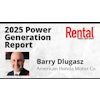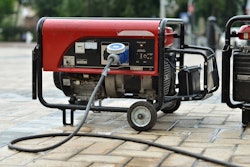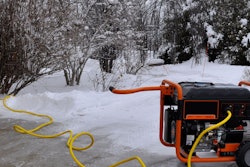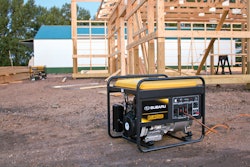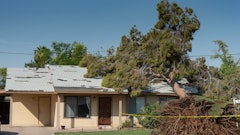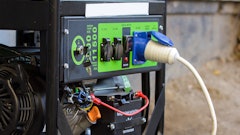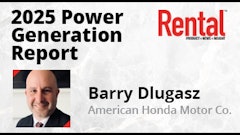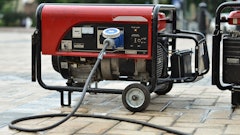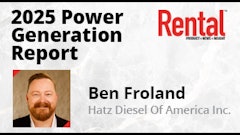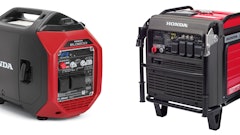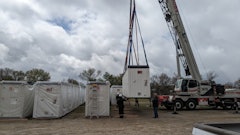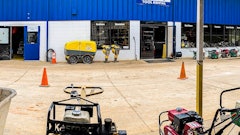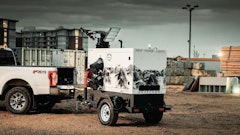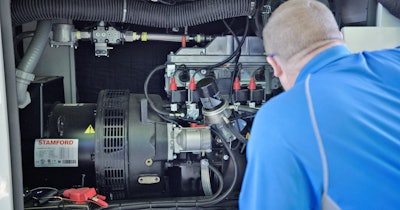
If the electrical power goes out, the common causes are either the weather or an external source that caused damage to the network lines and interrupted service. But those are understandable, "acceptable" circumstances. We’ve nearly grown accustomed to them. As they sit in the dark, customers may very well look to their local equipment rental for a generator to power the home or business until the main power is restored.
However, people are now being cautious about a new issue — grid instability. According to the “Report on Evaluating U.S. Grid Reliability and Security” by the U.S. Department of Energy (DOE), based on similar work completed by the North American Electric Reliability Corporation, the risk of long-term power outages has become a top concern across the country. The report found that the combination of the country’s growing energy demand and our infrastructure could leave some regions facing more than 800 hours of outages annually by 2030. These regions include Texas, California, and parts of the Midwest, where aging infrastructure and increasing demand create heightened vulnerability. As equipment rental businesses, those communities are your communities. Whether residential, commercial, or industrial, those customers may very well search for a solution — a situation that the equipment rental industry addresses daily.
“The DOE report makes it clear: the electric grid is under strain, and communities need dependable backup solutions today,” says Michael Newland, director of agriculture business development at the Propane Education & Research Council (PERC).
The power generation industry has been monitoring the issue for some time, recognizing the unbalanced equation between use and production. That equation has now been strained further with the AI data center growth.
“We’ve got power plants set to be retired; we’ve got this huge AI electricity demand coming online and ramping up — those two things can’t happen simultaneously without impacting the existing grid,” says Newland.
According to the U.S. DOE report:
- The status quo is unsustainable. If current retirement schedules and incremental additions remain unchanged, most regions will face unacceptable reliability risks within 5 years. The nation’s electrical power grid will be unable to meet expected demand for AI, data centers, manufacturing, and industrialization while keeping the cost of living low for all Americans. Staying on the present course would undermine U.S. economic growth, national security, and leadership in emerging technologies.
- Grid growth must match the pace of AI innovation. Electricity demand from AI-driven data centers and advanced manufacturing is rising at a record pace. The magnitude and speed of projected load growth cannot be met with existing approaches to load addition and grid management. Radical change is needed to unleash the transformative potential of innovation.
- With projected load growth, retirements increase the risk of power outages by 100 times in 2030. Allowing 104 GW of firm generation to retire by 2030 — without timely replacement — could lead to significant outages when weather conditions do not accommodate wind and solar generation. Modeling shows annual outage hours could increase from single digits today to more than 800 hours per year. Such a surge would leave millions of households and businesses vulnerable.
- Planned supply falls short, reliability at risk. The 104 GW of plant retirements are replaced by 209 GW of new generation by 2030; however, only 22 GW comes from firm baseload generation sources. Even assuming no retirements, the model found outage risk in several regions rises more than 30-fold, proving the queue alone cannot close the dependable-capacity deficit.
- Old tools won’t solve new problems. Traditional peak-hour tests to evaluate resource adequacy do not sufficiently account for growing dependence on neighboring grids. At a minimum, modern methods of evaluating resource adequacy need to incorporate frequency, magnitude, and duration of power outages, move beyond exclusively analyzing peak load time periods, and develop integrated models to enable proper analysis of increasing reliance on neighboring grids.
 Propane Education & Research Council
Propane Education & Research Council
Energizing the Rental Industry
The good/bad news is that we’re not talking tomorrow, but 4 or 5 years down the road. Yet, some are already facing similar issues. Today, when pull and demand on the grid are high, certain areas are already fighting rolling brown or blackouts, especially when the draw further increases come air conditioning season.
For rental yards, consider the homeowner and industrial/commercial customers. They’ll be interested in renting a generator immediately if and when they start recognizing outage trends. But before that, before anything, have a plan in place to keep the business operating to be able to continue supplying solutions to customers.
“You’ve got two different customers that will require two very different pieces of equipment,” says Newland. “If I’m in that spot, I am trying to determine what the likelihood of it impacting my area is and what I can afford to have on hand in my fleet to take care of the most customers or critical customers to prioritize my customer base.”
Of those customers, consider the critical infrastructure to keep things moving — locations like fuel stations. Many times in the past, communities have had fuel in the ground, but aren’t able to pump without a backup generator.
That starts with a plan. Newland suggests:
- Figure out the key and most impactful accounts.
- Make sure you have equipment ready and available when those accounts need it.
- Ensure everybody on those sites is trained on the specific equipment they’ll be receiving.
- Have a refueling plan in place.
- Consider and understand your target market — determine if you are 1) equipped to handle a residential, commercial, or industrial customer or 2) want to add assets to grow to serve another market.
“It’s going to be a lot of planning from here out,” says Newland. “I think it’s a real problem and the more time you have to plan, the more details your planning is, the better opportunities you have to work your way through it.”
The good news is that there is a lot of equipment available today designed to help both ends of that customer spectrum, powered by propane, gas, diesel, or rechargeable electric storage systems/batteries. Advanced planning, again, will be key. While the smaller assets are easier to obtain, the larger the generator; the longer the lead time.
Have that conversation with your staff or owners and make the determination to add units into the fleet, suggests Newland. Consider timing. Have a utilization plan for the remainder of the year. Develop a refueling plan with necessary partnerships. Determine if a larger fuel tank will be needed both as a rental asset and to keep the shop running.
No matter what, it’s always a good time to take inventory of generator assets and conduct general maintenance. It’s also an opportunity to read, start planning, and take a long-term look at the age of your assets.
A Refueling Strategy
If you don’t already have one in place, when developing a refueling strategy, one of the first steps is connecting with multiple local fuel sources in your area. Talk to them. Figure out what locations are close, what supplies they have nearby.
“You could be right in somebody's core distribution area, or you may be on the very fringe of somebody else's distribution area — I think that would be critical,” says Newland. “When things go south, you have to have a relationship with the people that are going to perform at the top level.”




